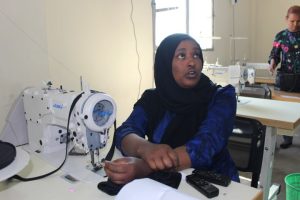
Strategically positioned in the Horn of Africa (HoA) and endowed with abundant renewable and non-renewable energy resources, Ethiopia is poised to become a regional energy hub.The nation has the potential to generate over 60,000 MW of electric power from hydroelectric, wind, solar, and geothermal sources. Accordingly, it is undergoing significant reforms to exploit the untapped energy potential through constructing mega projects aimed at responding to the increasing energy demand and also exporting to the neighboring countries.
Ethiopia’s energy export is part of a broader plan to economically integrate the East African region through electricity infrastructure. The nation has secured 140 million USD from energy exports in the last Ethiopian fiscal year and is working to further reach neighboring countries in the region through energy export. The country has been exporting energy to Djibouti, Kenya, Sudan and other countries and planning to reach Tanzania. Energy is one of the most significant sectors for Ethiopia’s economic growth in which development is expected to boom significantly.
Ethiopian Electric Power (EEP) CEO Ashebir Balcha disclosed that EEP targets over USD 260 million in energy export earnings and the transmission testing to Tanzania will commence soon part of the country’s efforts to expand its energy export market to the wider HoA region. Ethiopia has been exporting electricity to Sudan, Djibouti and other neighboring countries for years.
The country started exporting power to Kenya last year in November 2022.The Abbay Dam generated 17 percent of the country’s total energy output despite operating only two of its 13 turbines during the last fiscal year. With the generation of additional energy from Abbay dam, Ethiopia’s domestic energy supply will rise. Gibe III, GERD, and Tana Beles hydroelectric dams contributed 34, 17, and 9.6 percent power to Ethiopia’s overall energy production.
Ethiopia has prioritized the construction of the grand dam, which with a projected installed capacity of 5,150 MW, is intended to serve as an engine for industrialization, economic development, and hard currency earnings through the export of electricity.
Ethiopia’s current 5,200 MW of installed generation capacity reaches less than 60 percent of the country’s population. The nation plans to increase power generation capacity to 17,000 MW in 10 years. Approximately 90 percent of the installed generation capacity is from hydropower, while the remaining 10 percent is from wind and thermal.
The nation is also constructing the Koysha Hydropower dam by the Omo River, which will be the second largest in Ethiopia next to the Abbay Dam with a capacity 2,170 MW.The government is now working to diversify the generation mix with other sources such as solar, wind, and geothermal that will result in a more climate-resilient power system. It sees partnering with the private sector as a critical component to expanding energy output.
The Ethiopian Electric Power (EEP) Communication Director Moges Mekonen, said that Ethiopia expects to earn around 10.1 billion birr from energy exports to neighboring Djibouti, Kenya and Sudan in the current 2023/2024 fiscal year. Similarly the nation aims to start energy exports to Tanzania in the 2023/2024 fiscal year, and if the plan is successfully carried out, it will be the first time the East African country exports energy to another country with which it does not share border.
Ethiopia earned 102 million USD from energy exports in the previous 2022/2023 fiscal year and plans to earn a further 20 billion birr in revenues from domestic energy-related activities.The Ethiopian government has announced its plan to increase the country’s export revenues from electric power to 400 million USD within 10 years.
BY HAILE DEMEKE
THE ETHIOPIAN HERALD THURSDAY 7 NOVEMBER 2024





